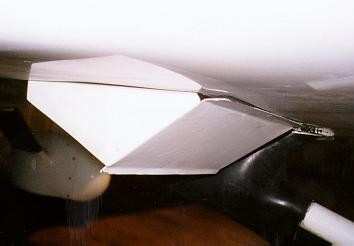Wed, Aug 02, 2006
Aero-Tips!
A good pilot is always learning -- how many times have you heard
this old standard throughout your flying career? There is no truer
statement in all of flying (well, with the possible exception of
"there are no old, bold pilots.")

Aero-News has called upon the expertise of Thomas P. Turner,
master CFI and all-around-good-guy, to bring our readers -- and us
-- daily tips to improve our skills as aviators. Some of them, you
may have heard before... but for each of us, there will also be
something we might never have considered before, or something that
didn't "stick" the way it should have the first time we memorized
it for the practical test.
Look for our daily Aero-Tips segments, coming each day to you
through the Aero-News Network.
Aero-Tips 08.02.06 (5) red
underline -- headers 5 regular
One of the most critical components to engine temperature
management, and one of the most commonly forgotten items in
high-performance engine operation, is the cowl flaps. Cowl flaps
can profoundly affect long-term health and longevity of a
high-performance airplane engine - making it even less likely to
reach the factory recommended Time Before Overhaul (TBO).

Cowl flaps are movable extensions of (usually) the lower engine
cowling that open or close to deflect the slipstream. When open,
cowl flaps deflect the slipstream and create an area of low air
pressure below the engine compartment. This draws air through the
cowling air inlets and across the cylinders, helping dissipate the
heat of combustion. It's especially important that cowl flaps
be open during high power operation at low forward airspeed-such as
takeoff and climb. In cruise closed cowl flaps create a smaller low
pressure area, but one still adequate for cooling at high indicated
air speeds.
Note: Open cowl flaps in cruise increase
airflow through the engine compartment, which also increases
"cooling drag" (increasing at the cube of the indicated airspeed).
In many models, leaving the cowl flaps open in cruise may cost five
knots or more in top-end airspeed.
Here's an easy mnemonic for remembering cowl flap use:
- C is for Checklists: Use printed
checklists -- start-up, climb, cruise, descent and after
landing.
- O is for Open cowl flaps for start-up,
taxi, run-up, takeoff, climb and for taxi-in after your clear the
runway.
- W is for Watch cylinder and oil
temperatures and close the cowl flaps as the aircraft
approaches cruise speed in level flight. But if the engine is
getting abnormally hot, or you're in a configuration where it's
likely to get hotter (taxi, takeoff or climb), open the cowl
flaps.
- L is for Leave the cowl flaps closed
for descent and landing.
Aero-tip of the day: Take care of your engine
by properly using the cowl flaps.
More News
Aero Linx: Model Aeronautical Association of Australia MAAA clubs are about fun flying, camaraderie and community. For over 75 years, the MAAA has been Australia’s largest fl>[...]
Touchdown Zone Lighting Two rows of transverse light bars located symmetrically about the runway centerline normally at 100 foot intervals. The basic system extends 3,000 feet alon>[...]
“Discovery and innovation are central to our mission at Virgin Galactic. We’re excited to build on our successful record of facilitating scientific experiments in subor>[...]
How To Get A Story On Aero-TV News/Feature Programming How do I submit a story idea or lead to Aero-TV? If you would like to submit a story idea or lead, please contact Jim Campbel>[...]
Student Pilot Reported That During Rotation, “All Of A Sudden The Back Of The Plane Kicked To The Right..." Analysis: The student pilot reported that during rotation, “>[...]
 ANN's Daily Aero-Linx (05.02.24)
ANN's Daily Aero-Linx (05.02.24) ANN's Daily Aero-Term (05.02.24): Touchdown Zone Lighting
ANN's Daily Aero-Term (05.02.24): Touchdown Zone Lighting Aero-News: Quote of the Day (05.02.24)
Aero-News: Quote of the Day (05.02.24) ANN FAQ: Contributing To Aero-TV
ANN FAQ: Contributing To Aero-TV NTSB Final Report: Cirrus Design Corp SR20
NTSB Final Report: Cirrus Design Corp SR20




